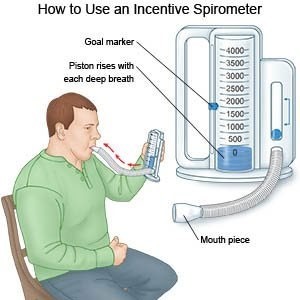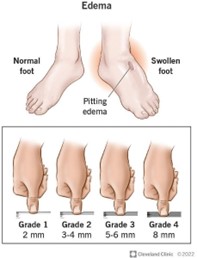A nurse is providing education to a postoperative client on how to use an incentive spirometer. Which of the following is an accurate step that should be included in the education plan?
Instruct the client to inhale slowly and as deeply as possible through the mouthpiece without using the nose.
Instruct the client to inhale normally and then place the lips securely around the mouthpiece.
Encourage the client to perform incentive spirometry 2 to 3 times every 1 to 2 hours, if possible.
When the client cannot inhale anymore, the client should hold his breath and count to 10.
The Correct Answer is A
When providing education to a postoperative client on how to use an incentive spirometer, an accurate step that should be included in the education plan is to instruct the client to inhale slowly and as deeply as possible through the mouthpiece without using the nose ¹⁴. This helps the client to take deep breaths and fully expand their lungs. The other options (Instruct the client to inhale normally and then place the lips securely around the mouthpiece, Encourage the client to perform incentive spirometry 2 to 3 times every 1 to 2 hours, if possible, and When the client cannot inhale anymore, the client should hold his breath and count to 10) are not accurate steps that should be included in the education plan.

Nursing Test Bank
Naxlex Comprehensive Predictor Exams
Related Questions
Correct Answer is A
Explanation
An unlicensed assistive person (UAP) is a healthcare worker who is not licensed to perform nursing tasks but can assist with basic care under the supervision of a licensed nurse. Taking and recording vital signs is a task that can be delegated to a UAP. Making a bed and assisting with bathing are also tasks that can be delegated to a UAP. However, an unlicensed assistive person may not delegate tasks to others as they are not licensed to do so.
Correct Answer is D
Explanation
Heart failure is a condition in which the heart is unable to pump blood effectively, leading to a buildup of fluid in the body. This can result in edema (swelling) and fluid accumulation in the lungs, causing coarse crackles when breathing. The term for this condition is fluid volume excess, which refers to an excessive amount of fluid in the body.
Myocardial infarction is a heart attack, atelectasis is a collapse of lung tissue, and fluid volume deficit refers to a lack of fluid in the body.

Whether you are a student looking to ace your exams or a practicing nurse seeking to enhance your expertise , our nursing education contents will empower you with the confidence and competence to make a difference in the lives of patients and become a respected leader in the healthcare field.
Visit Naxlex, invest in your future and unlock endless possibilities with our unparalleled nursing education contents today
Report Wrong Answer on the Current Question
Do you disagree with the answer? If yes, what is your expected answer? Explain.
Kindly be descriptive with the issue you are facing.
